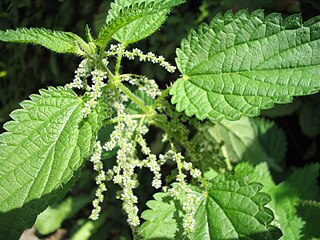
The Urticaceae are a family, the nettle family, of flowering plants. The family name comes from the genus Urtica. The Urticaceae include a number of well-known and useful plants, including nettles in the genus Urtica, ramie, māmaki, and ajlai.
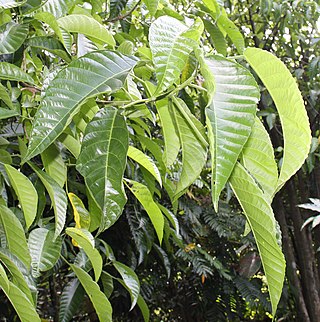
Dendrocnide is a genus of approximately 40 species of plants in the nettle family Urticaceae. They have a wide distribution across North East India, Southeast Asia, Australia and the Pacific Islands. In Australia they are commonly known as stinging trees.

Urera is a genus of flowering plants in the nettle family, Urticaceae. It has a pantropical distribution.
Boehmeria ramiflora, synonyms including Boehmeria jamaicensis, is a species of plant in the family Urticaceae. It is native from Mexico through Central America and parts of the Caribbean to South America. It was first described by Nikolaus Joseph von Jacquin in 1760.

Laportea is a genus of plants in the family Urticaceae. They are herbaceous, either annual or perennial. Like many plants of the Urticaceae, they have stinging hairs. There are stinging and non-stinging hairs on the same plant. The genus was named after the French naturalist Francis de Laporte de Castelnau.
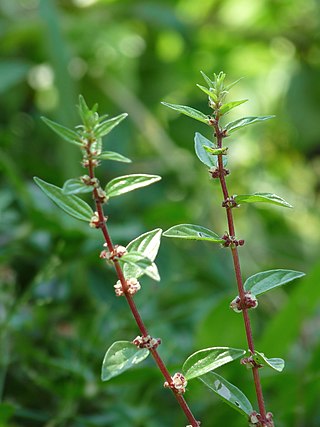
Pouzolzia is a genus of flowering plants in the nettle family. There are about 35 species distributed throughout the tropical world. Most are shrubs, and some are herbs. The genus was named for French botanist and plant collector Pierre Marie Casimir de Pouzolz (1785–1858).
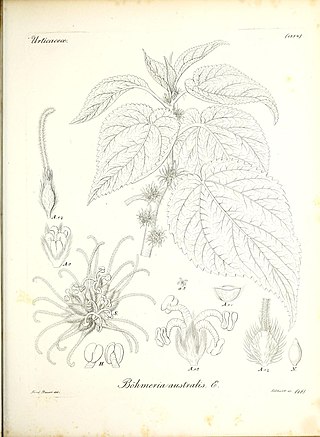
Pouzolzia australis, synonyms including Boehmeria australis and Boehmeria calophleba, is a large shrub species in the plant family Urticaceae. It is endemic to small islands belonging to Australia and New Zealand – Norfolk Island, Lord Howe Island, and the Kermadec Islands. The population on Norfolk island, sometimes treated as a distinct subspecies, is critically endangered.
Maoutia is a genus of shrubs or small trees in the nettle family (Urticaceae).
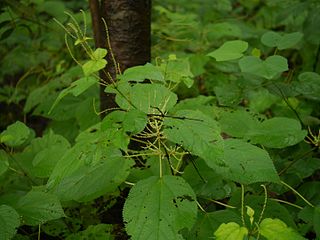
Boehmeria virgata subsp. macrophylla is a subspecies of Boehmeria virgata, a flowering plant in the nettle family Urticaceae. This herbaceous plant perennial is native to tropical Africa and the western Indian Ocean. Some sources say that it is also native to China.
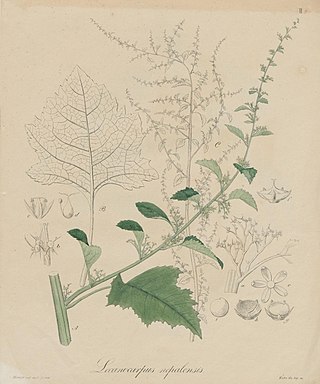
Acroglochin persicarioides is a species of flowering plants in the plant family Amaranthaceae. It is distributed from the Himalayas to China. The systematic position of the genus Acroglochin in subfamily Betoideae is still uncertain.
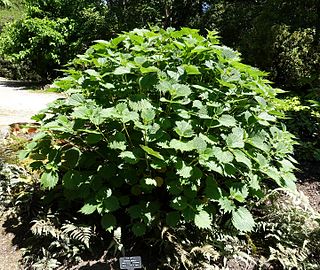
Boehmeria japonica is a species of flowering plant in the nettle family (Urticaceae). It native to eastern Asia, where it is found in China, Japan, South Korea, and Taiwan.
Boehmeria depauperata, synonyms including Boehmeria glomerulifera and the illegitimate name Boehmeria malabarica, is a shrub or tree in the family Urticaceae, native to China, Tibet, and tropical Asia. It is sometimes known as the Malabar tree nettle.
Cypholophus is a genus of flowering plants belonging to the family Urticaceae.
Leucosyke is a genus of flowering plants belonging to the family Urticaceae.
Oreocnide is a genus of flowering plants belonging to the family Urticaceae.
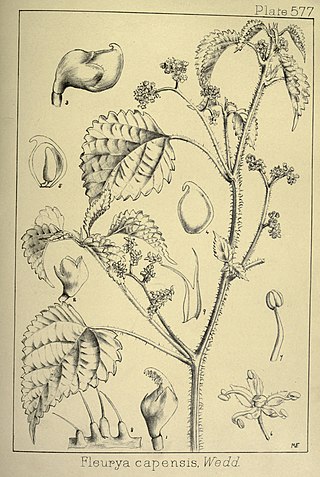
Didymodoxa is a genus of flowering plants belonging to the family Urticaceae.
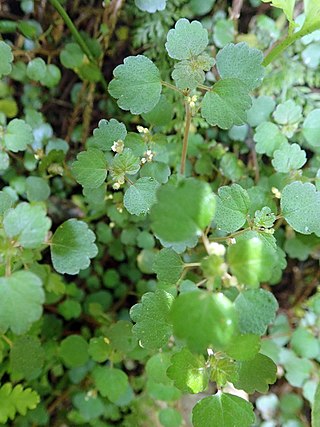
Australina pusilla, the small shade nettle, is a species of flowering plant in the family Urticaceae, native to eastern Australia, and New Zealand. A highly variable perennial herb reaching 50 cm (20 in), it is often found growing alongside shady streams.
Boehmeria virgata is a species of flowering plant in the family Urticaceae, native to a wide area, from tropical Africa, the western Indian Ocean, tropical and subtropical Asia to Australia and the Pacific. It was first described by Georg Forster in 1786 as Urtica virgata.










